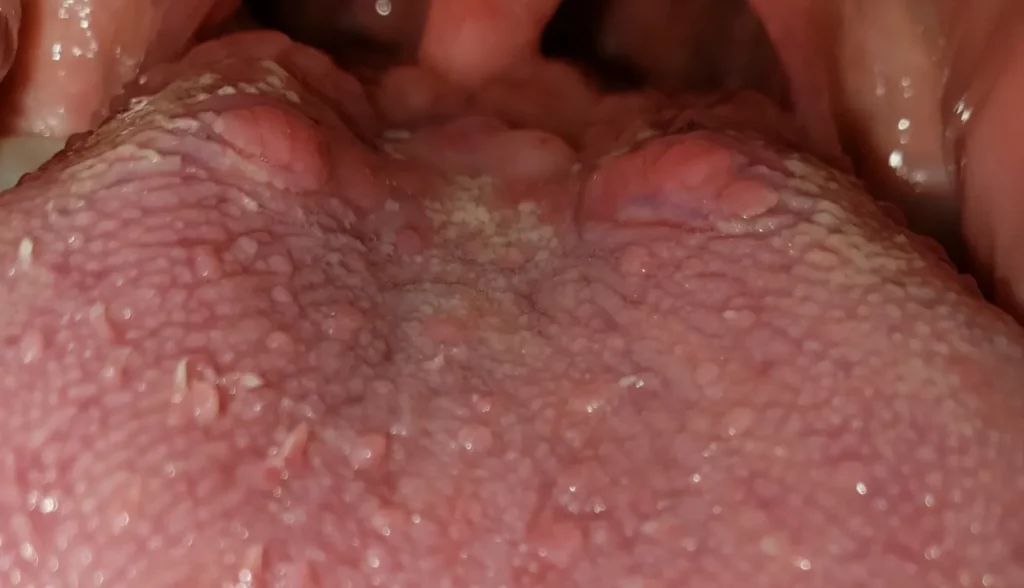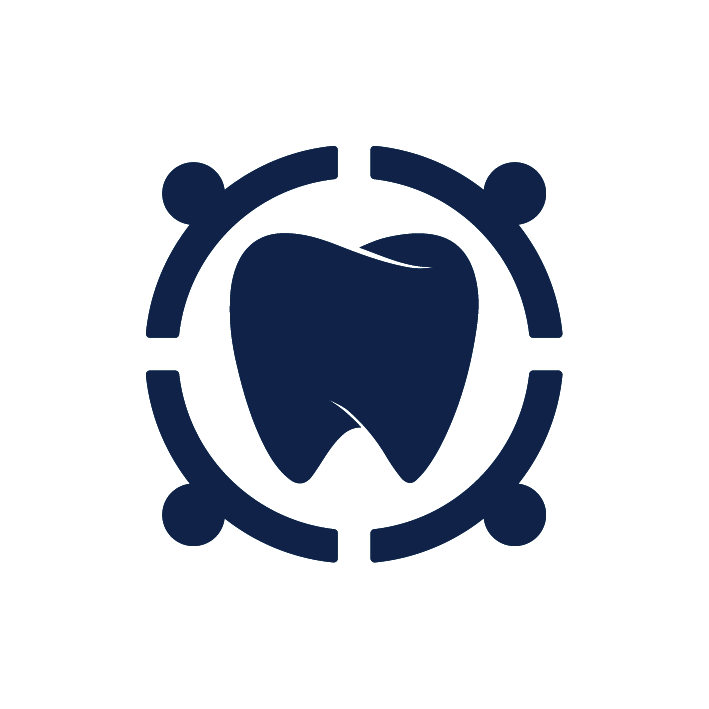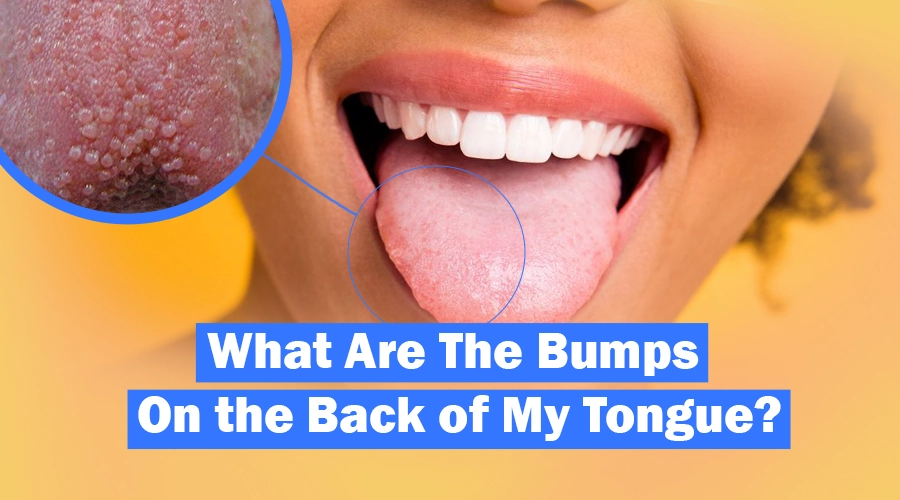Were you eating, and all of a sudden, your tongue hurt? We don’t think about our tongues too much, but they can be a good indicator of our overall health.
The appearance of the tongue can change for a variety of reasons, most of which are not life-threatening.
Have you ever seen bumps on the back of your tongue? Well, these bumps have a reason to be, and in this article, we’ll explore them, so make sure to stick around.
What Are Bumps on the Back of the Tongue?

The taste buds, also known as papillae, are hundreds of bumps on the surface of our tongues. If you take a look at the mirror and really, really pay attention to your tongue, you’ll be able to see them.
These tiny bumps are usually unnoticeable because they have clear color and texture. However, sometimes they can look swollen. Although bumps on the back of the tongue may only be a temporary annoyance, they can make eating, talking, swallowing, and even tasting food an absolute nightmare. But they will likely heal on their own in most cases.
Extreme, spreading, or long-lasting bumps, on the other hand, could indicate the presence of another underlying condition that requires you to get medical attention.
What Causes Bumps on the Back of Your Tongue?
For the most part, you shouldn’t stress out and think of the worst when it comes to tongue bumps. They tend to be normal and usually harmless.
Still, it’s good to be aware of every case scenario because sometimes it can be something more severe. You may get bumps on the back of your tongue as a result of:
Injuries:
A bumpy tongue may be caused by a tongue injury. The tongue, like other parts of the body, will swell in reaction to an injury.
If you bite your tongue unintentionally, there’s a chance you can experience a swollen bump for a few days after.
Another common cause of tongue injuries is burning hot liquids or foods.
Canker sores:
Canker sores are a very common type of mouth sores. They usually appear on the inside of the lips, but they can also show up on the tongue. The sores are typically red, white, or yellow in color, and they can be raw and painful.
Canker sores appear to be triggered by some foods, according to some people. Still, the cause of canker sores is actually unknown. Most canker sores can heal on their own, but some become very painful and need attention from a dentist in Mexico.
Allergies:
Food intolerances and allergic reactions can swell the tongue and cause bumps.
Anaphylaxis is a life-threatening reaction that causes sudden, widespread swelling of the tongue. If you notice you have any of the symptoms below, you should seek medical attention right away.
- If your lips, mouth, or tongue are swollen
- If you develop a rash or hives suddenly
- if you’re having respiratory problems
Oral herpes:
Herpes is a viral infection that affects many adults. Some individuals with oral herpes have no symptoms at all. Some, however, will sometimes grow cold sore blisters around their nose or mouth.
Blisters can appear on the tongue and gums. They are known for being very painful and can last up to a week. Oral herpes may be transmitted by saliva, direct contact with the infected region, or contact with the mouth and tongue lining.
Irritation:
The tongue, gums, and lips may also be irritated by some foods, such as sour candy or highly acidic foods.
This can cause rough bumps on the back of the tongue to appear and last a few days. You can generally blame this issue on any recent dietary changes.
Oral thrush:
Oral thrush is a form of yeast infection that affects the mouth. Yeast is a form of fungus that thrives in damp, dark environments. This condition tends common in babies, particularly newborns.
Rough white patches on the tongue or lips are signs of oral thrush. There is also redness and a sore throat. Some people report a cottony sensation in their mouth or a dry feeling. Others feel discomfort or cracking near their lips when eating.
Cancer:
Bumps on the back of the tongue, although rare, may be a symptom of oral or tongue cancer. Squamous cell papillomas, or wart-like bumps, can appear white or red and are usually harmless. The only way you can find out for sure if an odd bump is cancerous is to visit a doctor who can give you a diagnosis.
Another disorder that causes tongue bumps is leukoplakia. When the cells in your mouth expand too quickly, they irritate your taste buds. Inflamed tongue bumps can occur in people with diabetes, anemia, and autoimmune diseases.
Symptoms of Having Tongue Bumps

The back of your tongue has typically inflamed bumps that look bigger and swollen. They can also change color, being white, bright pink, or black patches.
Watch out for these signs:
A burning feeling or pain
Although enlarged bumps on the back of the tongue may irritate it, you can also notice a localized burning sensation in the affected region. This pain could be ongoing or just noticeable when you use your tongue.
Changes in flavor
Taste is not regulated by the papillae on the back of your tongue. However, if the inflammation has spread, you can lose some or all of your taste sensations or have trouble distinguishing between tastes such as salty, bitter, sweet, or sour.
You’re having trouble moving your tongue.
It can be challenging to move your tongue normally as the bumps on the back of your tongue swell.
This may have an effect on regular speech and swallowing, depending on the severity. Swelling may also make the tongue feel sore and look bigger, as the top and bottom teeth can not fit together neatly around the tongue in some cases.
A texture that feels furry or hairy
Between inflamed tongue bumps, debris, bacteria, and dead skin cells may become trapped and stuck—a white, fluffy coat forms on the surface of your tongue as a result of this accumulation.
How to Treat bumps on the back of the tongue?
Some causes of tongue bumps require special attention from a dentist in Mexico. Most bumps on the back of the tongue, on the other hand, can be relieved at home. The following are some examples of home remedies:
- Drink plenty of water, preferably through a straw if it’s more convenient.
- Use a warm salt water rinse.
- Try your best not to smoke or consume alcoholic beverages.
- Use numbing creams or gels on the skin.
As you treat tongue bumps at home, keep an eye on their scale, color, and spread; if nothing changes or your condition worsens, make an appointment with your doctor or a dentist in Mexico.
Prevention is the safest form of home treatment. Make sure you have your oral hygiene on track, and you will prevent inflamed bumps on the back of your tongue from recurring.
If you have any questions or need professional assistance, contact us! We’ll be happy to give you the best dental experience possible.




Leave a Reply